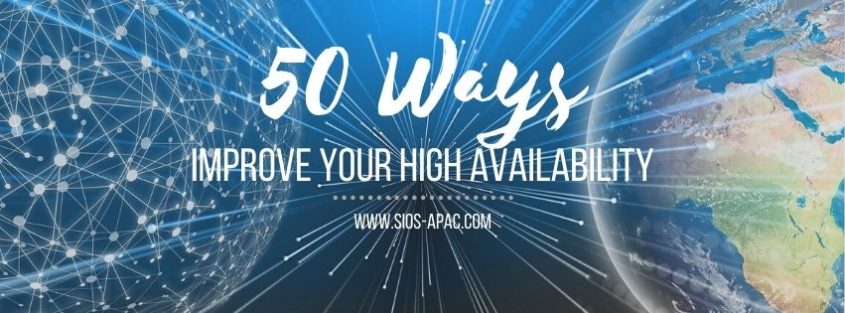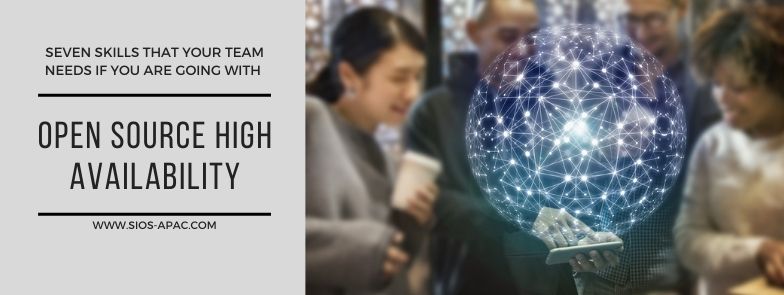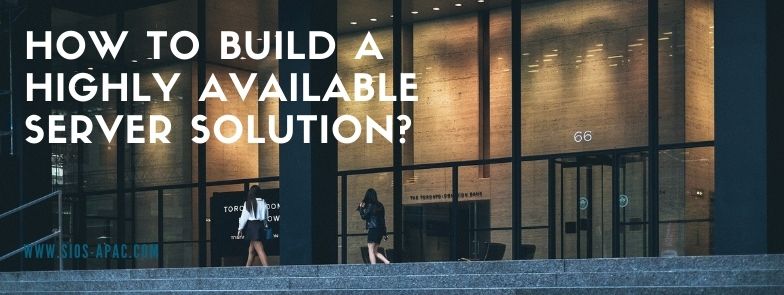| April 5, 2021 |
Fifty Ways to Improve Your High Availability
|
| March 31, 2021 |
Seven Skills That Your Team Needs if You are Going with Open Source High Availability
Seven Skills That Your Team Needs if You are Going with Open Source High AvailabilityIn the realm of High Availability (HA) there are certain important skills your team needs if you decide to go the route of open source. Open source by definition denotes software that is freely available to use. Today, there are numerous commercial implementations of high availability clusters for many operating systems provided by vendors like Microsoft and SIOS Technology Corp. These commercial solutions provide resource monitoring, dependency management, failover and cluster policies, and some form of management prepackaged and priced. An alternative to commercial implementations are several open source options that also give companies the opportunity to provide high availability for their enterprise. As companies continue to look for optimizations, cost savings, and potential tighter control, a growing number of companies and customers are also considering moving to open source availability solutions. Here are seven skills that your team may need for a move to Open Source HA:1. Coding skillsIn many cases the lack of pre-packaged and bundled support for enterprise applications means that your team will need to be able to develop solutions to protect components, fix issues with bundled components, or write application connectors to ensure application awareness is properly handled. Lots of people can write scripts, but your team will need to know how to create and adhere to sound development practices and standards. The basics of this include things such as:
2. Knowledge of the technology environmentMany enterprise applications require integration with multiple systems in order to provide high availability that meets the Service Level Agreements (SLA) and Service Level Objectives (SLO). Your team will require deep application awareness and knowledge of the technology environment to build protection and solutions for this integration with multiple enterprise systems. You need people who know the ins and outs of the critical applications, the technology environment for those applications, networking, hardware, hypervisors, and an understanding of the environmental and application dependencies. You’ll also need team members who understand the architecture, features, and limitations of the set of HA technologies that you intend to use from the Open Source community. Consider how much of these areas your team knows and understands:
3. Business process knowledgeYou need someone to understand your business requirements, and the business process. Your team needs professionals who understand the enterprise’s business and the processes that drive it. Your team will need to know and understand how much budget is available to spend for developing the solution, how much risk the business is willing to take, and how to gather additional requirements that may be unspoken or unspecified. The team will also need to know, or to hire someone who knows how to convert those business requirements into software requirements and how to manage a process that brings a minimum viable high availability solution to fruition that meets the needs of the business, the speed of the business, and fits within the processes of the business. 4. Experience with OS, Applications and InfrastructureIf you are looking to go all open, your team will need experience understanding Operating Systems, Applications and Infrastructure. You’ll need to understand the various OS release cycles, including kernel versions for Linux, updates and hotfixes for Windows. You have applications in house that need to be supported, but you’ll need to also be diligent to understand the application update cycle, their dependencies, and the intersection of applications and OS support matrices. If your environment is homogeneous, great. Otherwise, your team will need to know the differences between RHEL, RHEL derivatives, and SUSE. If you are both Linux and Windows you’ll need to know these as well. You’ll also need to understand the difference that the infrastructure will make on the application and OS combination. AWS and Azure present differences for high availability that differs from GCP, on-premise, and other hypervisors. 5. Change management capabilitiesImagine that you have the development team to create the solution, with technical and business knowledge along with a firm grasp of the OS, Infrastructure and Applications. But, getting the scripts together is just the beginning. Your team will also need change management capabilities. How will your team keep track of the code changes and versions, packages, and package locations? How will your team manage the releases of updates and changes? Your team will need to be versed in a source repository, such as git, project management tools, such as Jira, and release train proficiency. You’ll need a team that understands how to make updates to code, deliver patches and fixes, all while avoiding unwanted impact. 6. Data analytics and troubleshooting experienceWhen you enter the space of delivering your own HA solution your team will need analytics and troubleshooting experience. You’ll need to have resources who understand the intersection of application code, system messages, and application error logs and trace files. When a system crash occurs, you’ll have to dig deeper into the logs to troubleshoot and find the root cause, analyze the data to make recommendations, and be prepare to roll out changes (see #5 above). Don’t forget, your team will also need to know and understand what the data from these logs and trace files can tell you about the health of your environment even when there isn’t an error, failure or system crash. 7. Connections (Dev, QA, Partners, Community)Let’s be honest, your business isn’t about delivering high availability, but if you decide to dive into the realm of open source HA you are going to need more help than just the brilliance on your team. Key to getting that additional help will be understanding where to start and then making the right connections to community developers, persons who are experts on testing, HA and application partners, and the open source community. Open forums have been really helpful, but you’ll need to double check if the response times are compliant with your SLAs and SLOs. Using Open Source solutions is an option that many companies choose to pursue for cost concerns and a perception of flexibility, lower cost, and less risk. But, buyer beware, there may be hidden costs in the form of new skills and management, and hidden risks in terms of the open source programs you use that will be needed for any “roll your own HA solution.” – Cassius Rhue, VP, Customer Experience Reproduced from SIOS |
| March 25, 2021 |
Cloud Migration Best Practices for High Availability |
| March 21, 2021 |
The New Normal Will Still Include High Availability |
| March 16, 2021 |
How To Build A Highly Available Server Solution?
How To Build A Highly Available Server Solution?A key component to any high availability solution is figuring out how to redirect the client traffic. Almost every user-based application needs to connect to the server. Redirecting the client traffic will allow users to connect without having to know where the application or the database actually resides. Most solutions recommend network-based IP redirection or network based DNS redirection. This works. However, the best solution for a high availability server in our experience is the use of a virtual IP address that can be switched from one server to another. The server is listening to connections from the virtual IP address, where it’s hosted on one server today and switched to another on another day. To take it one step further, you can automate the failover. This is where the system makes decisions and switches the application when there is a failure detected. Bear in mind this step is key to building a highly available solution. Benefits of Buy vs. Build High Availability SolutionThis can be implemented using scripts and logic to check the status of processes and virtual IP addresses from one server to another. But one of the challenges we face in a buy vs build high availability solution is how much time we really have to spend in build. This includes time for script coding, API development such as cloudwatch API or lambda functions. Let’s not forget testing, and maintenance. When I was younger, I was eager to write that code. But after working for large Fortune 100 companies, and getting yelled at by a high level manager, when one of my scripts didn’t work at 3 am in the morning, I feel differently. This issue was exacerbated when I discovered an issue for a code I wrote a year ago. My managers wanted the highly available solution to work 100%. If it didn’t work, time to call up someone and yell at them. SIOS Automates High AvailabilityIsn’t it cheaper in the long run to buy the solution and spend a little time to tweak it to fit into our setting? This is where SIOS high availability (HA) solutions come in, whatever the application or database. SIOS has the code to switch the stack of the processes from one server to another. This gives users and managers the peace of mind that comes from automating the failover orchestration and high availability. There are two things that I love about the SIOS HA umbrella are. One, the code for the virtual IP where the IP address is added to the server and the application is restarted to listen to the connections. The second is enabled through the use of the application agnostic API set that SIOS provides. This allows anyone to protect any application by the use of plugins. Contact SIOS today to learn more about high availability solutions specific to your environment. – Edmond Melkomian, PMP, MCSD, consultant, SIOS technology, Inc. Reproduced from SIOS |
 Fifty Ways to Improve Your High Availability
Fifty Ways to Improve Your High Availability


